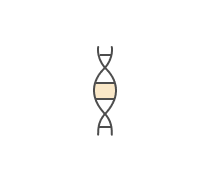Only 1 process (axon) extending from cell body (PNS), sensory neurons
Sympathetic is when your heart rate and blood pressure increases,...
True or False: Nerves are processes of motor and /or sensory neurons(...
Does the autonomic nervous system has voluntary or involuntary nervous...
Dopamine and norepinephrine are natural hormanes found in the body...
Parasympathetic reverses the sympathectic, slows down heart rate and...
What are neurons?
Basic characteristics of a neuron is long lived, can not reproduce...
Impulses from receptors in skin, sense organs and viscera to brain and...
Action potentials send what
Two types of synapses are (pick two)
Neural processing: Input travels along several different pathways to...
Smaller cells, fewer processes, similar to astrocytes, lends support...
Impulses from brain and spinal cord to effectors, either muscles or...
BBB is poorly developed in infants hence potential for damage of brain...
Return to "normal" of the electrical charges (+ outside and - inside)...
What impairs the conduction of impulse?
A synapses is a connection.
Highly branched, extensions of 1 body that carry impulses toward the...
Neurons are stimulated and when they receive an electrical impulse...
Does the somatic nervous system involve voluntary or involuntary...
Cells that are similar to oligedendrocytes except only found in the...
Does graded potentials have
An electrical synapses is a membrane that does or does not touch?
The two divisions of peripheral nervous systerm are___________ and...
What is Histology?
A single extension of cell body that carries impulses away from...
Schawann cell is responsible for the development of what?
Greater negativity inside (more likely to decrease probability of...
Structure of a neuron consist of ___________and ________________.
Several dendrites and 1 axon (99% of neurons in the brain and spinal...
Large diameter of nerve and the presence of a myelin sheath = faster...
Which one is not a function of the nervous system?
Epithelial cells that line ventricles (cavities) of brain and central...
Star Shaped cells that make up 1/2 the volume of the brain. They are...
When information gets to the end of an axon, ____________ enters from...
The BBB actually protects brain tumors from chemotherapy.
Nerve impluse (action potential) reversal of positive and negitive...
While resting membrane potential what charge does it have?
Function in impulse conduction- also called nerve cells, typically...
Neural processing: What process is very linear, one neuron stimulates...
Differential rates of molecule passage into the brain, due to size and...
The centeral nervous system is classified in two groups, what are...
Impulses from sensory neurons to motor neurons and are located in the...
Small cells, long processes, modified white blood cells, usually...
The importance of myelin is clear if you have this disease
What can't pass through the BBB?
What two hormones are blocked by cocaine?
What hormone is a natural pain killer and is produced under periods of...
Cell membrane of the schwann cell -function- to assist regeneration of...
Neurotoxin that inhibits release of acetylcholine (therefore muscle...
1 dendrite/ 1 axon ( sensory neurons, ex eyes)
Strong enough impluse results in stimulus that will be conducted
A chemical synapses is neuron membrane and effector cell membrane that...
When neurons work together they are often called
There are two types of signals that are produced by a change in the...
















